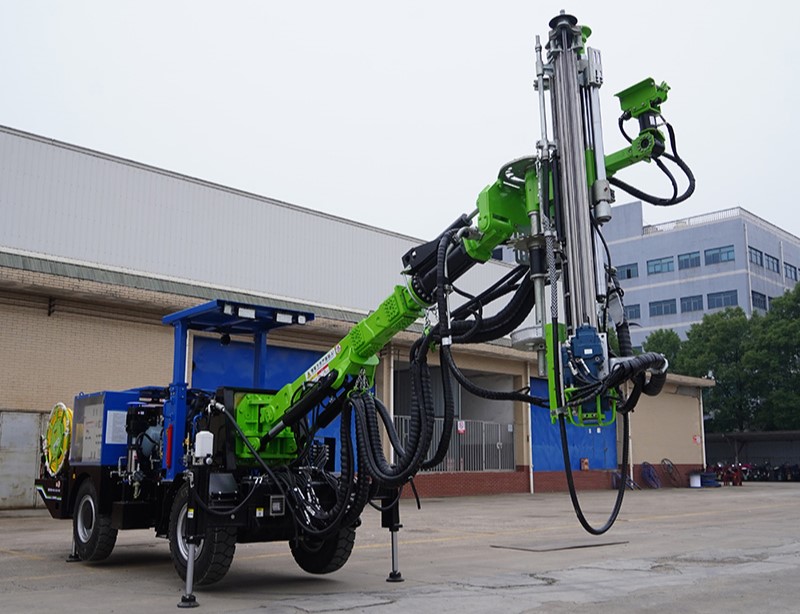What is a Surface Drill Rig? A surface drill rig is a type of heavy-duty drilling equipment designed for use in open-pit mining, quarrying, and construction projects. Unlike underground drilling machines, surface drill rigs operate above ground and are used to drill holes into rock, soil, or other materials to prepare for blasting, excavation, or foundation work. These rigs are vital in modern surface mining and civil engineering operations, providing high efficiency, accuracy, and productivity.

1. Functions of a Surface Drill Rig
The primary function of a surface drill rig is to create holes for the placement of explosives in mining or quarrying operations. These blast holes are carefully planned and drilled to ensure optimal rock fragmentation, which improves the efficiency of material extraction and reduces operational costs.
In addition to blast hole drilling, surface drill rigs are also used for:
① Pre-split drilling – creating cracks along a controlled line to minimize overbreak in rock blasting.
② Grade control drilling – determining the quality and composition of ore deposits.
③ Geotechnical and exploration drilling – collecting core samples for geological analysis.
④ Construction foundation drilling – preparing holes for anchors, piles, or utility installations.
2. Applications of Surface Drill Rigs
① Blast Hole Drilling in Mining and Quarrying: This is the most common application. Rigs drill a precise pattern of holes into a rock face. These holes are then loaded with explosives. The resulting blast fragments the rock into manageable pieces for excavation and transport to processing plants.
② Construction and Foundation Work: Rigs are used to drill holes for constructing foundations for bridges, buildings, and wind turbines. These holes can be filled with reinforced concrete to create sturdy piles that support massive structures. They are also used for soil nailing and anchoring for slope stabilization.
③ Water Well Drilling: Specialized rotary rigs drill deep holes to access underground aquifers, providing a vital source of water for communities, agriculture, and industry.
④ Geotechnical and Exploration Drilling: These rigs obtain core samples or chip samples from the subsurface. Geologists analyze these samples to determine rock type, mineral content, and structural integrity. This data is crucial for mineral exploration, site investigation for construction, and geological research.
⑤ Geothermal Drilling: Rigs drill deep boreholes to tap into the Earth's geothermal energy, which can be used for heating or to generate electricity.
3. Advantages of Modern Surface Drill Rigs
① Automation and remote control – allowing operators to work from safe distances.
② GPS and digital control systems – ensuring precise hole positioning and depth control.
③ Fuel-efficient engines and hybrid systems – reducing operational costs and environmental impact.
④ Ergonomic cabins and dust suppression systems – enhancing operator comfort and safety.
Surface drill rigs are essential tools for open-surface operations across mining, quarrying, and construction industries. Their ability to drill accurately, efficiently, and safely makes them indispensable in modern heavy-duty projects.





